Brake disc replacement
Suzuki DR350 motorcycles, 1990 - 1999.
Buy O-rings for your DR350. Good quality + low prices.
Front brake disc
The front brake disc on my 1993 DR350 measured 3.2 mm thick and with the minimum thickness at 3 mm, I decided to go ahead and replace it. The workshop manual mentioned 3.5 mm as the original thickness and I figured 0.3 mm of wear was enough for such an important safety component. I purchased a replacement disc from eBay seller: extreme_shop; the disc came complete with a new set of Sumo Brakes
brand Kevlar brake pads. The disc is made in Argentina by H&D (Primer Fabricante de Pastillas y Discos de Freno para Motos Certificado y Homologado de la Republica Argentina) and is part number 8003.
The replacement disc has an identical shape as the original.
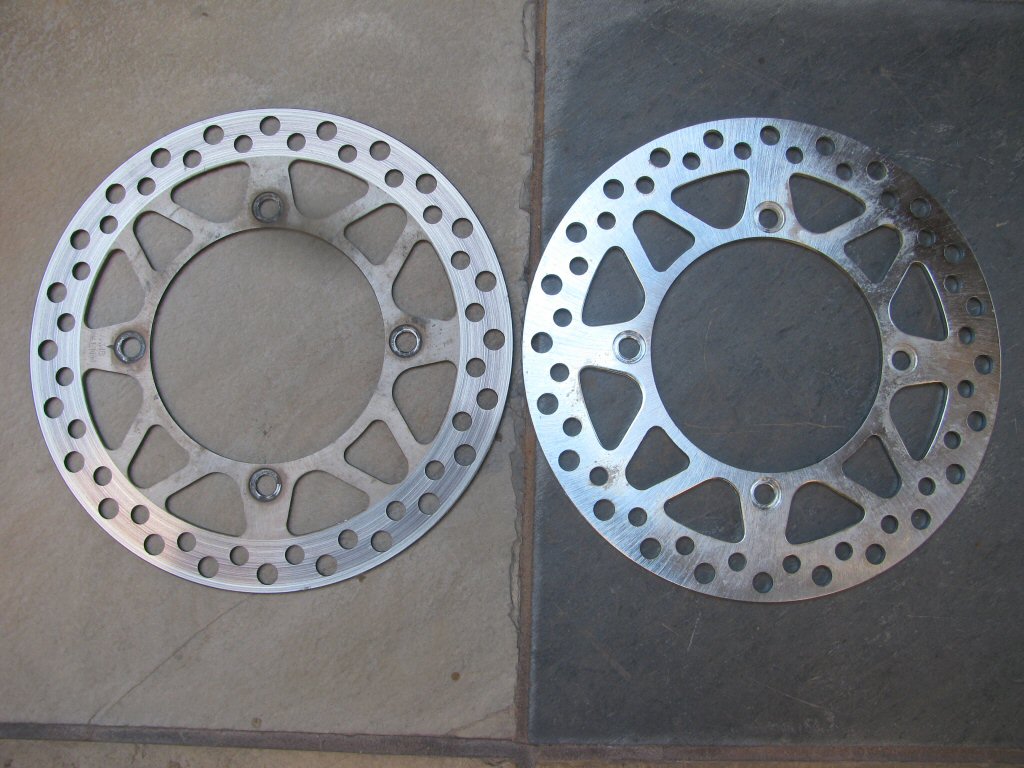
Photo courtesy of Gregory Bender.
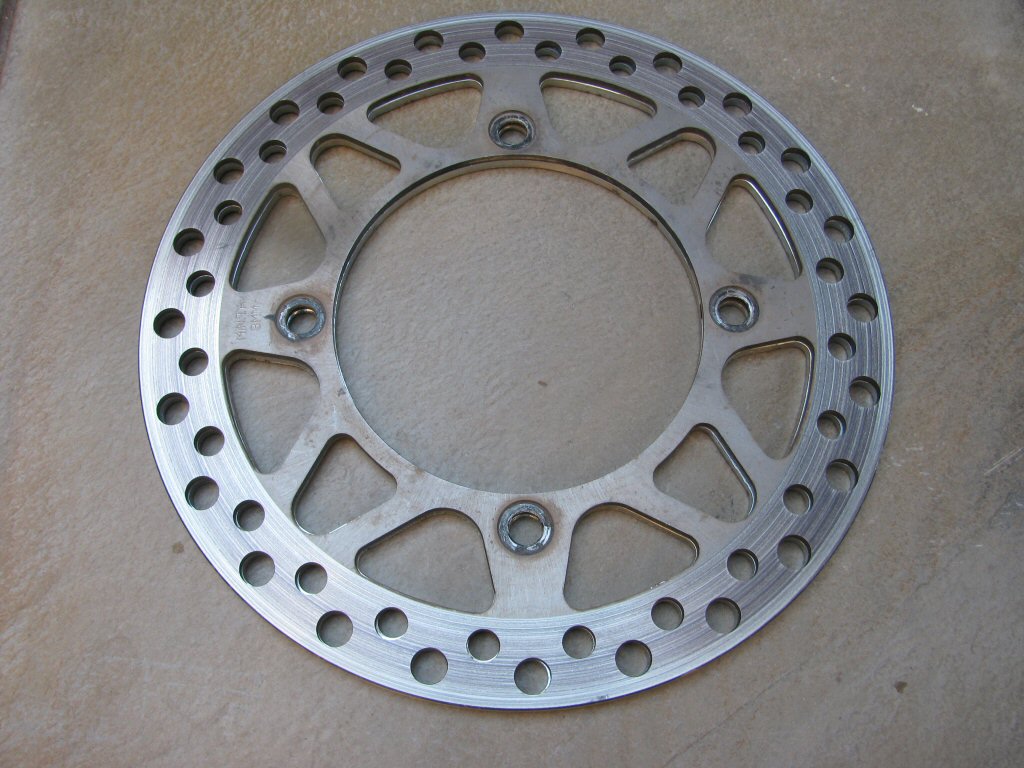
Photo courtesy of Gregory Bender.
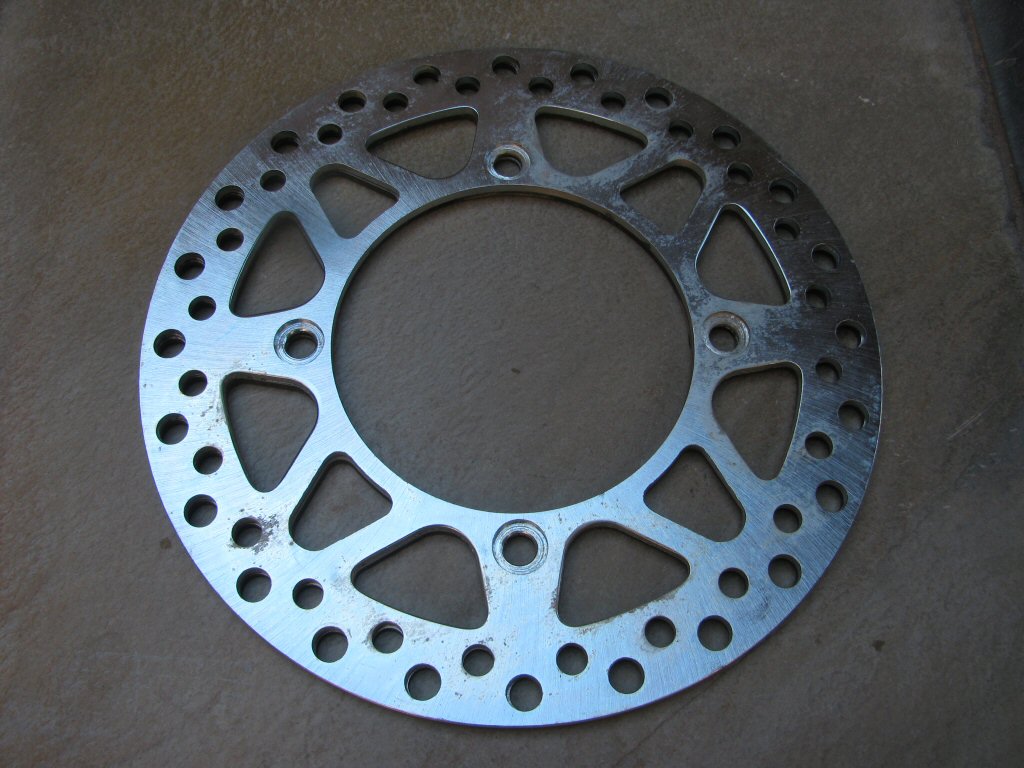
Photo courtesy of Gregory Bender.
I measured the thickness of my original disc in a location where it had not been reduced by pad wear. My original disc was 3.3 mm thick (my original disc only had 0.1 mm of wear). The new disc measures 4.2 mm thick. Given the minimum thickness is 3 mm thick, the new disc provides a huge increase in usable thickness over the original disc. More on this in a moment.
Unlike the rear brake disc, I was able to easily remove the original button-head
bolts with the intended hex tool. I'm not sure if Suzuki used a different thread locking compound on the rear bolts (I suspect they might not have used any on the bolts securing the rear disc). But thread locking compound certainly does protect the threads from seizing. The front bolts do accept a larger hex tool than the rear bolts, so this also greatly aids later removal.
I fit OEM replacement bolts from Suzuki (SPN# 09106-08155. These bolts are 8 mm × 1.25 mm × 20 mm button head socket cap bolts and came with blue thread locking compound applied to them. I torqued to 18 pound feet. Since the bolts have a 4 mm step
under the head, a generic replacement would be a bit difficult to find.
After all of this, I discovered that the 4.2 mm thickness of the new brake disc is too thick and rubs constantly on the the new pads. So, I had to revert to my original disc (which wasn't nearly so worn as I feared, anyway). The eBay seller (extreme_shop) is standing behind the product they sell and is providing me with a full refund (good stuff, that).
Rear brake disc
The rear brake disc on my 1993 DR350 was well under the minimum thickness of 3.5 mm and I needed a replacement. I purchased a replacement disc from eBay seller: extreme_shop; the disc came complete with a new set of Sumo Brakes
brand Kevlar brake pads. The disc is made in Argentina by H&D (Primer Fabricante de Pastillas y Discos de Freno para Motos Certificado y Homologado de la Republica Argentina) and is part number 8002.
The replacement disc has an identical shape as the original.
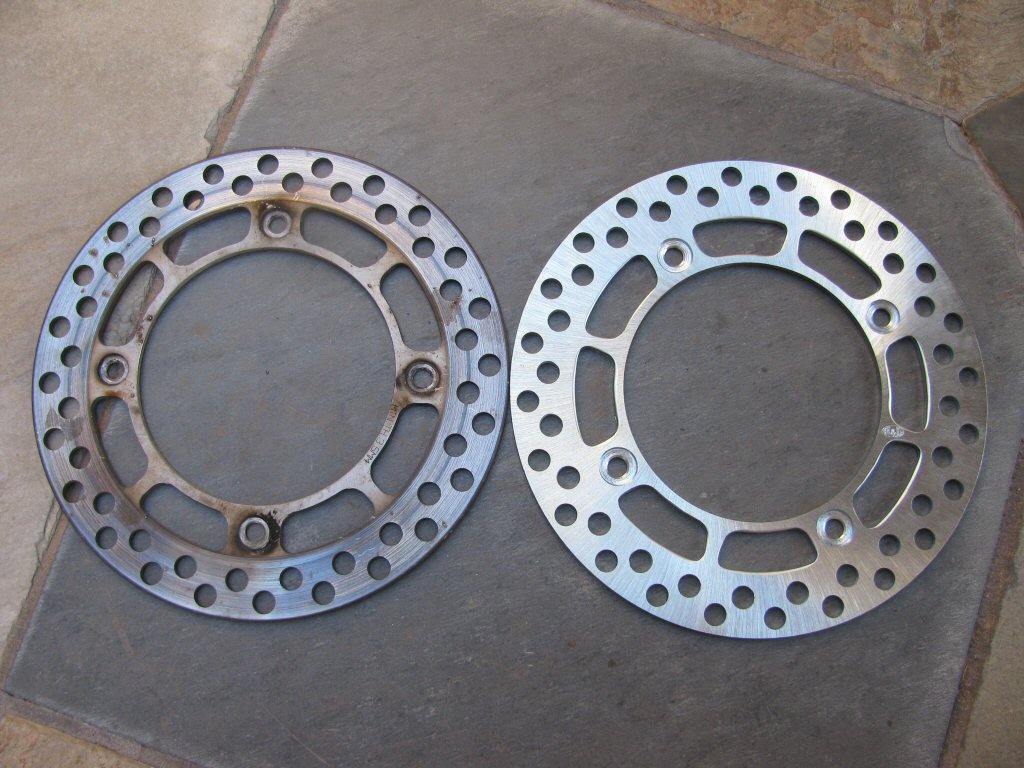
Photo courtesy of Gregory Bender.
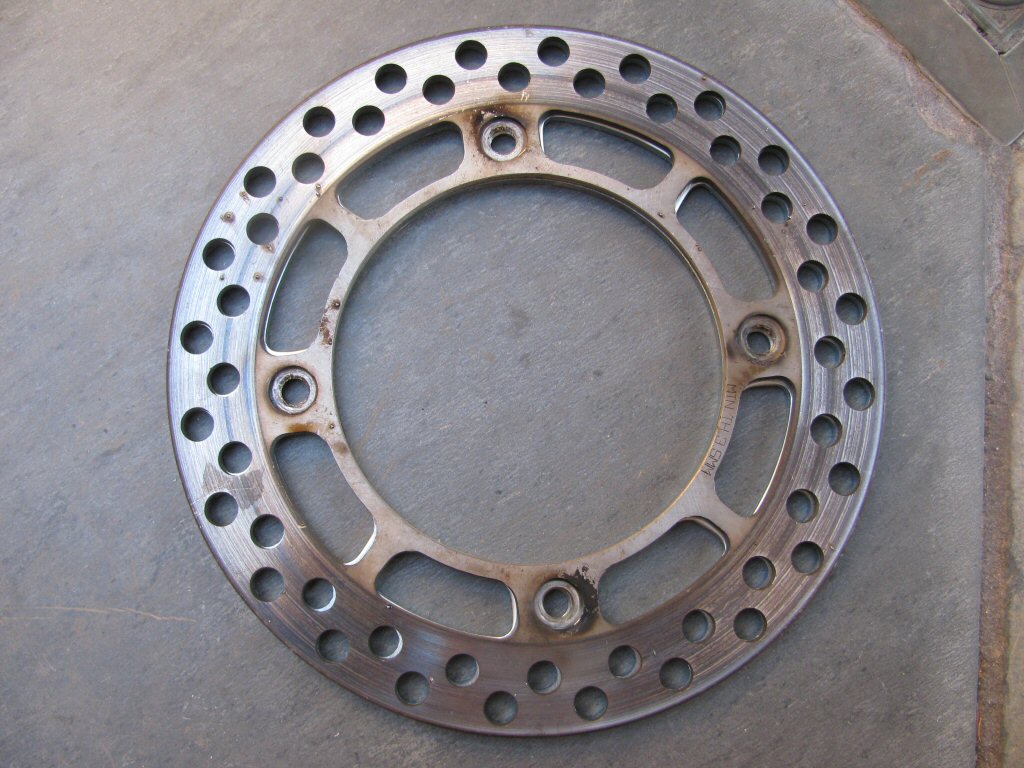
Photo courtesy of Gregory Bender.
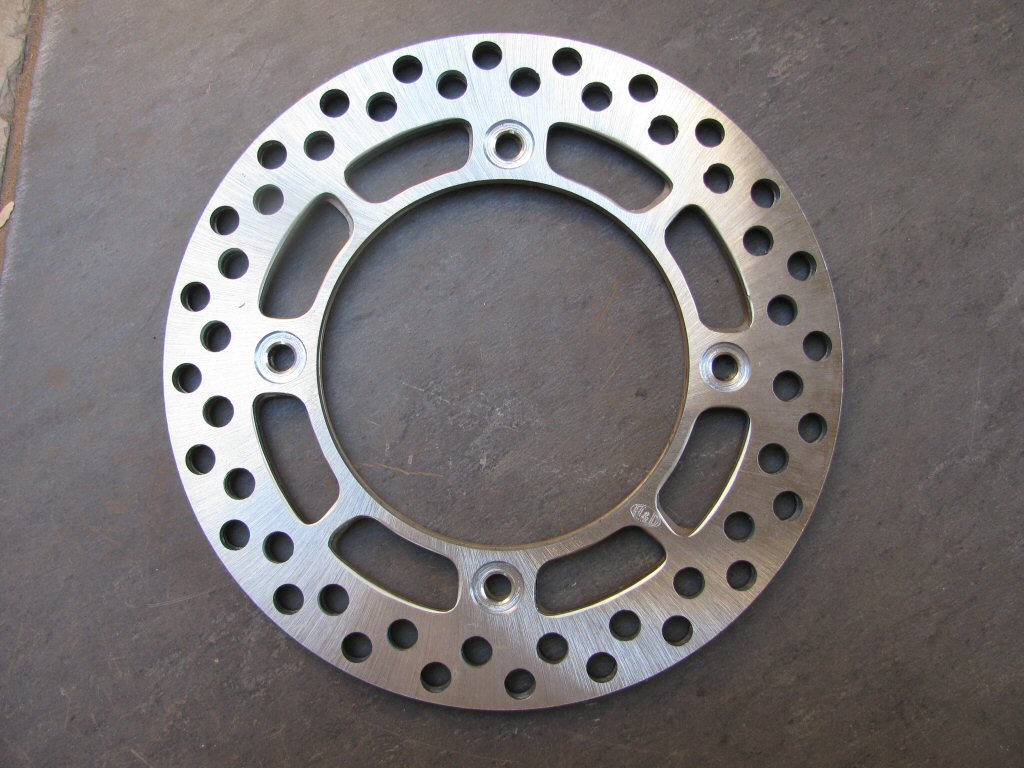
Photo courtesy of Gregory Bender.
I measured the thickness of my original disc in a location where it had not been reduced by pad wear. My original disc was 3.9 mm thick. The new disc measures 4.3 mm thick. Given the minimum thickness is 3.5 mm thick, the new disc gives me twice the usable thickness of the original disc. I like that.
I was unable to remove the original button-head
bolts with the intended hex tool. Even after fully heating the bolt and surrounding casting, the hex-shaped holes within the button-head bolts simply rounded off instantly. Rather than waste time attempting to drill out each bolt, I grabbed a set of inexpensive old wrenches and welded the box end of the wrench to the bolt head. I could have just as easily welded larger nuts to the head of each bolt, but this was a good use of cheap, poor quality tools I really needed to get rid of, anyway. I made sure to direct plenty of heat from the weld into the bolt. Immediately after each weld was complete, I was able to turn out each bolt easily.

Photo courtesy of Gregory Bender.
I fit OEM replacement bolts from Suzuki (SPN# 09106-08091 or SPN# 09106-08111 or SPN# 09106-08128). These bolts are 8 mm × 1.25 mm × 16 mm button head socket cap bolts and came without any thread locking compound applied to them. I applied blue Loctite to the threads and torqued to 18 pound feet. Were I to source a generic replacement, I would select a hardened bolt. Something like McMaster-Carr part number 91239A418 ought to work great.